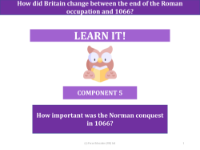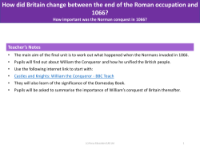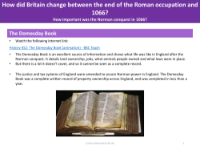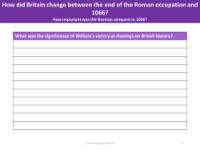William the Conqueror - Info pack
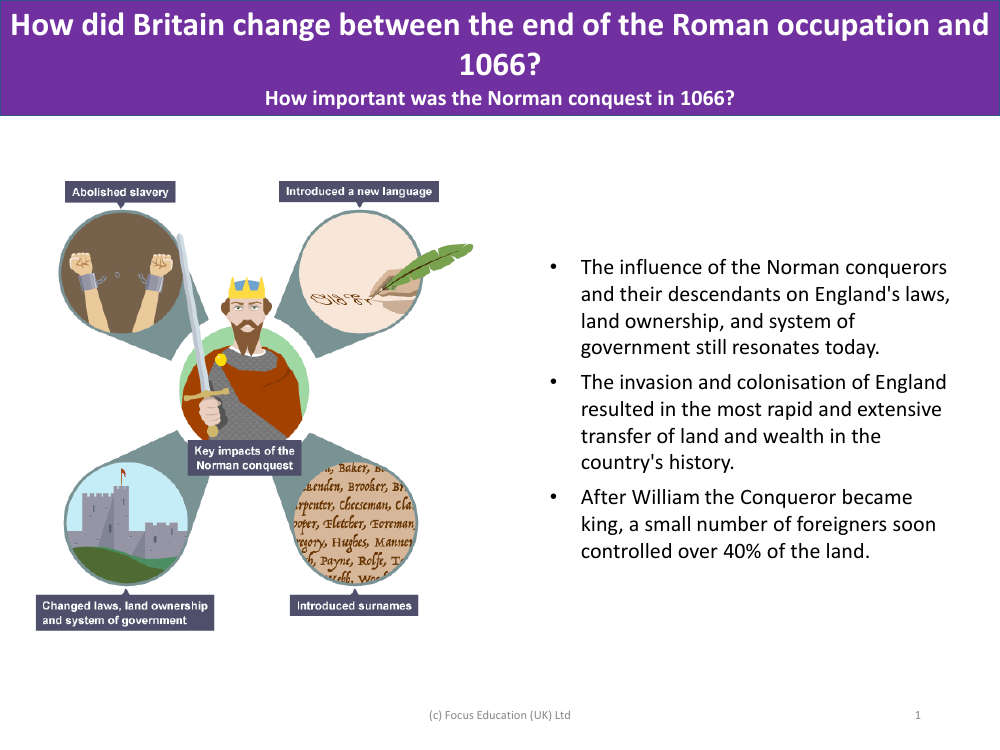
History Resource Description
The Norman conquest, led by William the Conqueror, profoundly influenced England's landscape in terms of laws, land ownership, and governance. The arrival of the Normans catalysed the most rapid and sweeping redistribution of land and wealth ever seen in English history. Following his coronation, William swiftly ensured that a mere handful of Norman elites controlled a staggering 40% of English land. This seismic shift in power dynamics and property rights had long-lasting repercussions that are still evident in the country's legal and governmental frameworks today.
In 1066, the Battle of Hastings became a pivotal moment in British history, with William the Conqueror's forces defeating the Anglo-Saxon army led by King Harold Godwinson. This victory, known as the Norman Conquest, effectively ended Anglo-Saxon dominance in England. The conquest's timing was also critical; had William crossed the English Channel in summer as initially planned, he would have faced a much larger English army. However, adverse winds delayed his invasion, ultimately working in his favour. One of William’s most notable contributions was the commissioning of the Domesday Book, an extensive census that provided a detailed account of the population and resources of England, laying the groundwork for future governance and still serving as a precious resource for historians today.


